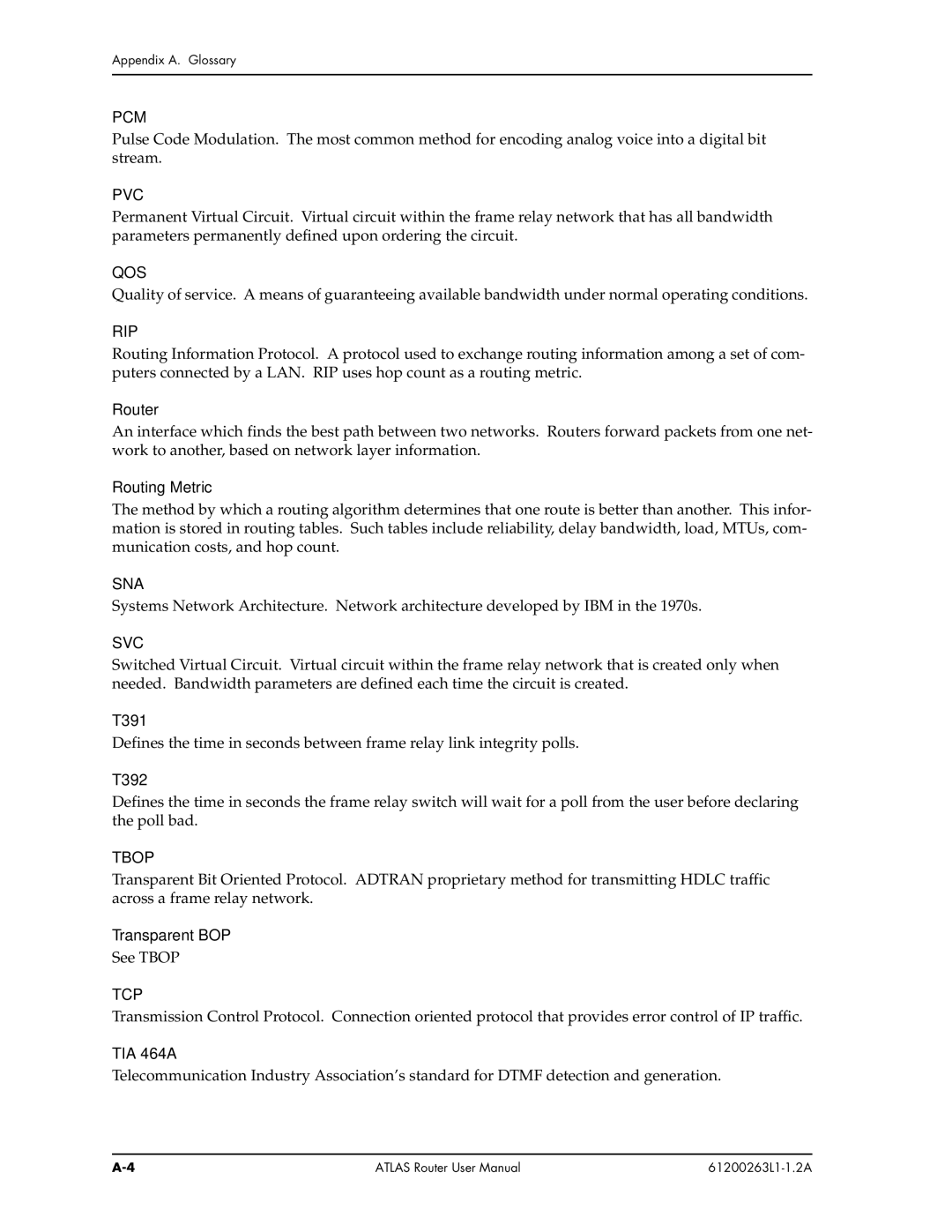
Appendix A. Glossary
PCM
Pulse Code Modulation. The most common method for encoding analog voice into a digital bit stream.
PVC
Permanent Virtual Circuit. Virtual circuit within the frame relay network that has all bandwidth parameters permanently defined upon ordering the circuit.
QOS
Quality of service. A means of guaranteeing available bandwidth under normal operating conditions.
RIP
Routing Information Protocol. A protocol used to exchange routing information among a set of com- puters connected by a LAN. RIP uses hop count as a routing metric.
Router
An interface which finds the best path between two networks. Routers forward packets from one net- work to another, based on network layer information.
Routing Metric
The method by which a routing algorithm determines that one route is better than another. This infor- mation is stored in routing tables. Such tables include reliability, delay bandwidth, load, MTUs, com- munication costs, and hop count.
SNA
Systems Network Architecture. Network architecture developed by IBM in the 1970s.
SVC
Switched Virtual Circuit. Virtual circuit within the frame relay network that is created only when needed. Bandwidth parameters are defined each time the circuit is created.
T391
Defines the time in seconds between frame relay link integrity polls.
T392
Defines the time in seconds the frame relay switch will wait for a poll from the user before declaring the poll bad.
TBOP
Transparent Bit Oriented Protocol. ADTRAN proprietary method for transmitting HDLC traffic across a frame relay network.
Transparent BOP
See TBOP
TCP
Transmission Control Protocol. Connection oriented protocol that provides error control of IP traffic.
TIA 464A
Telecommunication Industry Association’s standard for DTMF detection and generation.
ATLAS Router User Manual |
